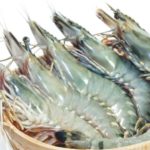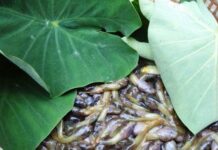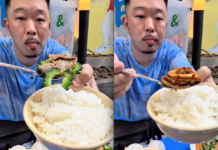Knowing whether to keep or remove the heads of shrimp when preparing or cooking them is a common dilemma for many, especially when it comes to the sticky substance found in their heads. A recent Facebook post by Nguyet Nguyen in the ‘Yêu Bếp (Esheep Kitchen family)’ group shed some light on this very topic, garnering over 5,000 likes and numerous comments and shares in less than 24 hours. Let’s take a look at what was shared.
1 What is Shrimp Roe?
 What is shrimp roe?
What is shrimp roe?
Similar to crabs, shrimp also have roe, but in smaller quantities. It is the portion that contains the shrimp’s reproductive cells and is located in the head.
For male shrimp, it is a system for producing sperm to ensure the continuation of their species. In female shrimp, it is the ovaries. The mature eggs will descend to the female’s abdomen/apron, while the fertilized eggs will be protected in the female’s abdomen for a period during the breeding season before being released into the external water environment once they have successfully hatched.
2 What is Shrimp Waste?
 What is shrimp waste?
What is shrimp waste?
Shrimp waste is also located in the head, enclosed within a small pouch resembling a stomach (which turns chewy when boiled) and connected to the shrimp’s intestine (the black thread-like portion running from the shrimp’s back to its tail). Similar to farmed and wild freshwater fish, wild river shrimp have very small stomachs, making it challenging to identify their waste. However, farmed shrimp tend to have more visible waste, appearing as a black or gray mass on their heads. When cooked, this part hardens and becomes a small, round mass within the tiny stomach pouch.
This is the part that should be removed, along with the black thread on the shrimp’s back, to prevent a fishy smell.
Following Nguyet Nguyen’s post, there were comments sharing tips to avoid confusion between shrimp roe and waste. For naturally caught shrimp (or thinner shrimp), the waste pouch is white due to a lower waste content. On the other hand, farmed shrimp (fed with more food) will have a black or gray waste pouch due to a higher waste content.
 Vicky Nguyen’s comment on distinguishing waste pouches in wild and farmed shrimp
Vicky Nguyen’s comment on distinguishing waste pouches in wild and farmed shrimp
These are the most distinct features to identify shrimp roe and waste. When peeling shrimp, pay attention to the roe, which is a vibrant yellow (orange or red) substance with a fatty texture, whereas waste is a small, round, black mass in the head. The deeper the green color of the shrimp’s shell, the more attractive the roe’s color. As for the smell, Nguyet Nguyen compares it to durian, as some find it appealing, while others avoid it due to its fishiness.
 Boiled shrimp
Boiled shrimp
Nguyet Nguyen also mentioned that almost all provinces in the Mekong Delta region have wild shrimp, but the highest concentrations are found in Ben Tre, Ca Mau, and Kien Giang due to the brackish water conditions favorable for shrimp reproduction during the season.
These were the insights shared by Nguyet Nguyen in the ‘Yêu Bếp (Esheep Kitchen family)’ group regarding shrimp roe and waste. Make sure to keep these tips in mind to enhance the taste and cleanliness of your shrimp dishes.
Read more










